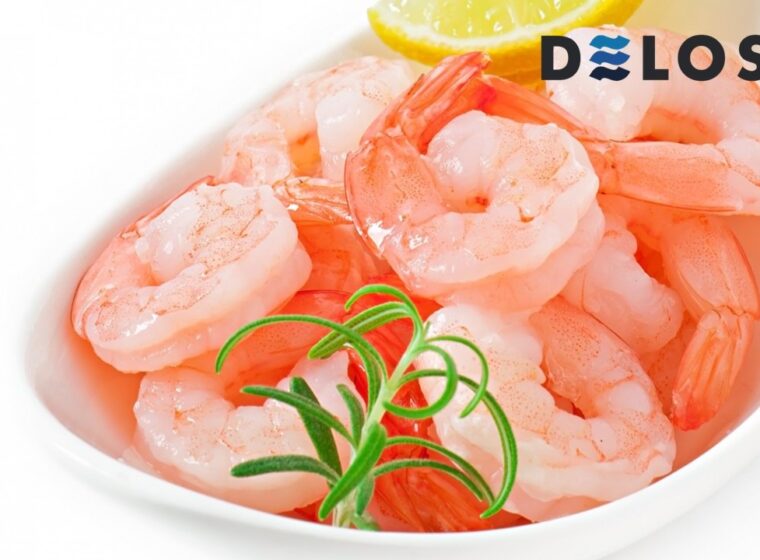The increase in Indonesian shrimp exports is one of the major targets set by the Ministry of Marine Affairs and Fisheries (KKP) in 2024. Since 2020, the KKP has set an ambitious target to increase shrimp exports by 250 percent.
This 250% figure is based on the national shrimp production throughout 2020, which reached 856,753 tons. This significant increase in shrimp production has given the KKP confidence in achieving the target of increasing Indonesia’s shrimp exports in 2024.
Of course, this has sparked discussions about the strategies that will be implemented to achieve this target. Find out more in this article:
Is This Target Realistic?
According to the National Coordinator of Destructive Fishing Watch (DFW) Indonesia, Moh. Abdi Suhufan, the target of increasing shrimp export volume by 250% is quite realistic if accompanied by breakthroughs and innovations. Of course, this requires good and strong cooperation from all stakeholders involved in the aquaculture sub-sector.
Furthermore, several fundamental issues have been overlooked by the KKP which could potentially hinder the achievement of this target. These issues are related to shrimp production processes, land tenure status, water channel conditions, water availability for cultivation, and so on.
According to Suhufan, if the KKP only intervenes in providing the necessary facilities and infrastructure such as seedlings, water gates, and generators, this alone cannot drive a significant increase in shrimp production figures, which will certainly affect the volume of shrimp exported.
Also Read: Key Success Factors in Building an Excellent Shrimp Export Image
1. The Importance of Shrimp Exports for National Fisheries
Shrimp exports have been a major contributor to the total value of national fishery product exports. In 2023, Indonesia’s shrimp export volume reached 241,200 tons with a total value of USD 2.16 billion.
While national shrimp production in 2022 reached 1.48 million tons with a value of IDR 92.69 trillion, showing a 21.25% increase compared to the previous year. However, the challenge lies in the significant production increase not being accompanied by a proportional rise in export value.
2. KKP’s Targets and Strategies
The Ministry of Maritime Affairs and Fisheries has set a target of a 250% increase in shrimp exports for 2024. KKP has implemented several strategies to achieve this target, including the construction of modern shrimp ponds in BUBK Kebumen.
Minister of Maritime Affairs and Fisheries, TB Haeru Rahayu, stated that achieving a 250 percent increase in shrimp export value relies on intensive and super-intensive shrimp ponds with higher productivity levels.
3. Development of Sustainable Shrimp Farming Areas as Production Drivers
A sustainable shrimp pond management model has been successfully applied by KKP in the modern shrimp ponds of BUBK Kebumen. This approach emphasizes integrated and environmentally friendly management, allowing continuous shrimp farming activities and the attainment of production targets.
Also Read: Barriers and Challenges of Indonesian Shrimp Export in the Global Market
4. The Role of Private Sector and Investors in Achieving Projections
Many national private companies are showing interest in shrimp farming, especially with sustainable and environmentally friendly management models. This interest could accelerate the achievement of the national shrimp export target. The commitment of all stakeholders is crucial for success, presenting significant opportunities to increase the national shrimp export supply share.
5. Challenges Faced and Solutions
To achieve a target, challenges will inevitably be encountered. Addressing these challenges is crucial to boosting the export value of Indonesian shrimp. Collaboration between the central government, local authorities, and national private companies is essential to improving productivity and overcoming potential obstacles.
6. Opportunities for Increasing Indonesian Shrimp Exports
a. Export Market Diversification
Diversifying export markets can be an effective strategy to increase the export value of Indonesian shrimp. Currently, about 18.35% of the total national shrimp production volume is exported to Japan, the United States, Europe, and China. Increasing market penetration in other developing and potential countries could open doors to a larger export share.
b. Value Addition
By expanding product lines and improving quality, Indonesian shrimp can meet the diverse demands of international markets. Innovations in shrimp processing, such as high-value processed products, can create new opportunities to enhance competitiveness globally.
c. Enhanced Collaboration
Collaboration can support innovation in shrimp farming, spanning science, research, and technology. This can lead to more efficient farming practices, and improved shrimp quality can open doors to a larger market share.
Also Read: 7 Factors Influencing the Shrimp Export You Should Know
Support the Increase in Indonesian Shrimp Export Value with DELOS!
The target of a 250% increase in Indonesian shrimp export value in 2024 is an ambitious goal that is not impossible to achieve. The key lies in the strategy of developing sustainable shrimp farming areas and collaborating to generate innovations.
Let’s join DELOS in supporting the increase in Indonesian shrimp export volume, especially vannamei shrimp, to the global market! DELOS, together with shrimp farmers, is committed to improving the quality of Indonesian shrimp and ensuring sustainable shrimp farming practices.
Join DELOS in supporting Indonesian shrimp exports! Visit www.delosaqua.com or contact contact@delosaqua.com for more information.




